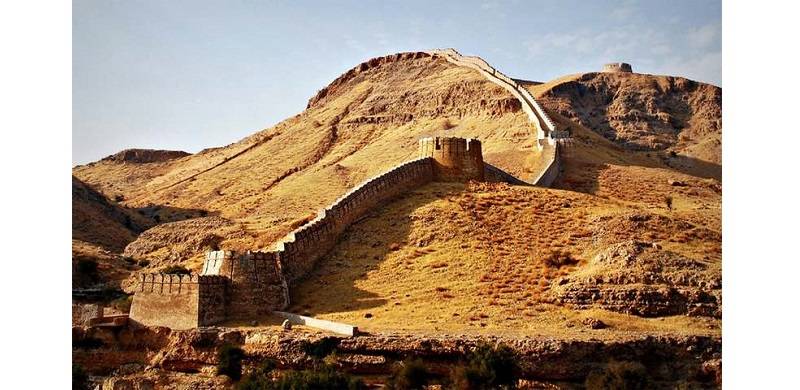
He wrote a narrative in Persian, commencing it on the orders of Emperor Akbar in the year 995 AH (1587 AD) and named it the Tazkirat-al-Vakiat or the Relation of Occurrences. This book was written with great sincerity and there is no doubt of its authenticity.
The manuscript was purchased at Lucknow, the capital of Awadh. According to Charles Stewart, the only copy of this book is today in Britain. It was purchased around the 1730s.
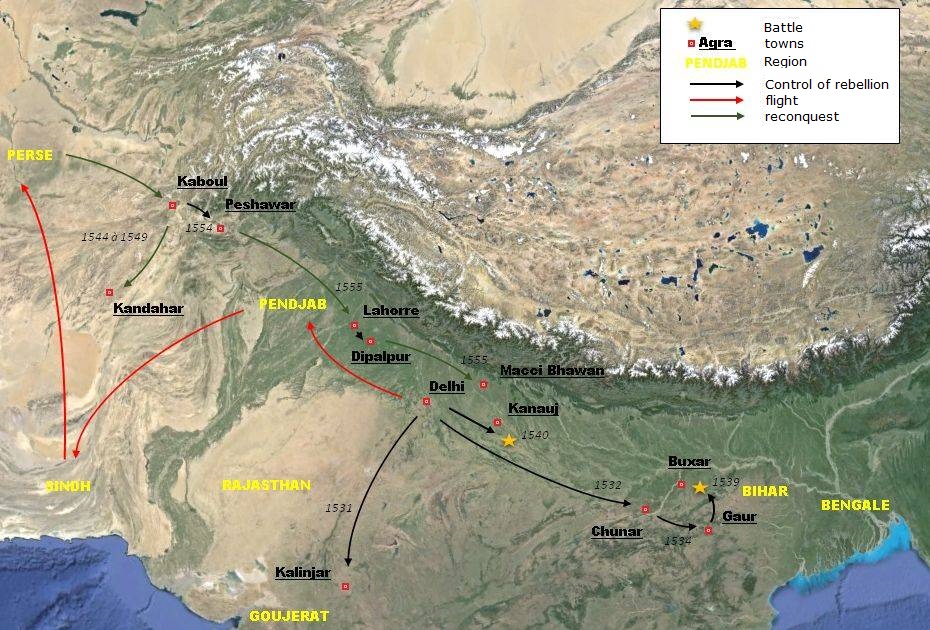 Giving details of Humayun’s exile (1540-43 AD) with his wife Hamida Bano Begum, infant Akbar and others in Sindh and Balochistan, Jauhar Aftabchi writes:
Giving details of Humayun’s exile (1540-43 AD) with his wife Hamida Bano Begum, infant Akbar and others in Sindh and Balochistan, Jauhar Aftabchi writes:“CHAPTER XIII.
His Majesty marches from Sinde, and proceeds towards Candahar. AH 950-AD 1543.
When the ambassador, Baber Kuly, returned to his master, and informed him that the King was ready to quit the country on certain conditions, he agreed to send to his Majesty 2,000 loads of grain, and 300 camels, to be delivered at the village of Rutay or Runay, from which place he assured the King that he might procure all other requisites for proceeding to Candahar. In consequence of this amicable agreement, his Majesty put all his baggage on board boats, crossed the river, and halted in the village of Rutay, till the grain and camels arrived; soon after which a distribution was made of them all to all the followers; after which we proceeded towards Suhan (Sehwan).”
(Page 49)
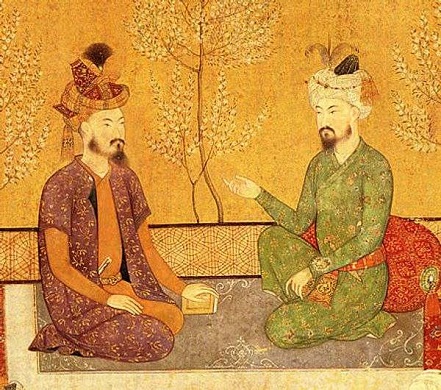
I have identified the village of Runai as Runi Nai or Ranikot, which is situated near Sann, Jamshoro District, Sindh, in Pakistan. Ranikot is 21 km west of Sann town. This fort is believed to be the world’s largest fort with a length of 31 km (19 miles). According to the Sind Gazetteer (1874), Ranikot was lastly repaired by the Talpur Amirs of Sindh around 1812 AD. Suhan is no doubt present day Sehwan, which is famous for Alexander’s fort and the shrine of Qalander Lal Shahbaz. According to MH Panhwar, some Mughal-period coins were found from the walls of Ranikot fort, particularly from Miri, the central place of the fort. It clearly shows Arghun, Tarkhan and Mughal influence and occupation.
Jauhar again writes:
In short, his Majesty having passed Sehwan, in two more marches reached Futtypur Kundavy (Gundava of the maps); from thence, in two other marches, he arrived at a station situated between two ponds of water; one of which was brackish, the other sweet: at this time the King asked which was the pond of sweet water; the guide replied, “that it was the one which we had left 7 coss in our rear.” On hearing this his Majesty was much displeased, and demanded why the camp had not been pitched at the sweet water, but learned that his was a maneuvre of Shah Hussyn’s, in order to annoy us.
(pages 49-50)
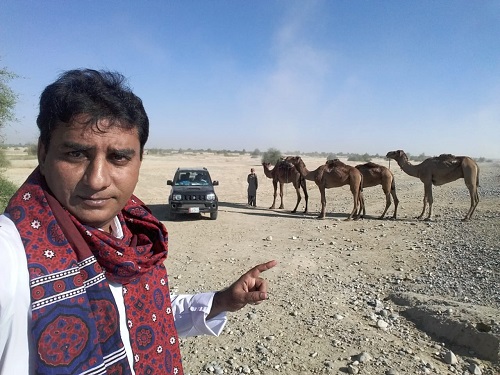
Fatehpur is situated in District Jhal Magsi Gundava, Balochistan. The distance between Larkana and Fatehpur is 178 km. According to Major David Price’s book Chronological Retrospect or Memoirs of the principal events of Muhammadan history (London 1811), Amir Timur’s son Miran Shah led an expedition in Kachhi Gundava in the direction of Khossaud or probably Kosdar in 1384 AD. It is believed that this town was founded by Sultan Jam Fateh Khan, the ruler of the Samma dynasty in Sindh. He founded Fatehpur on the banks of the Mula River between 1398 to 1414 AD. Jam Fateh Khan also occupied Bakhar, Sibi and Gundava to protect Sindh border from raids of Timurid invaders. He was a great grandfather of Sultan Jam Nizamuddin Samo or Jam Nindo, whose tomb stands in the Makli Necropolis at Thatta, Sindh.
From the memoirs of Humayun compiled by Jauhar and Gulbadan Begum, we can easily know about ancient routes that led caravans from Sindh to Balochistan, Iran and Afghanistan. Emperor Humayun started his journey from Ranikot to Sehwan. After reaching Sehwan, he crossed Larkana and arrived at Fatehpur
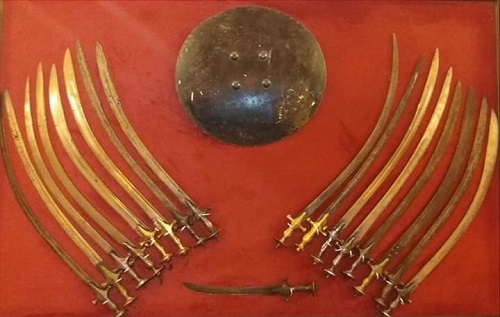
Zunnun’s son Shah Beg Arghun for several years had been pushing his way out into Sindh by way of the Bolan Pass. He took Siwi or Siwistan in about 917 AH (1511 AD) from a colony of Barlas Turks under Pir Wali Barlas. Describing this event, Syed Mir Muhammad Masum Bakhri writes in his Persian book entitled Tareekh-e-Masumi (1600):
So, Shah Beg sent a body of troops from Shawul towards Seebee, and following these, he by successive marches arrived there, and took the fort. Of the men who were in it, some made their Salaam, others, who had houses there, fled to Futehpoor. After this, Shah Beg sent Meer Fureed Urghoon , Meer Fazil Kokaltash, Zaynak Khan Tarkhan , Aqil Atka and others to Kandahar; he himself went towards Futehpoor, 50 kos from Seebee, in the direction of Sind, now deserted, but the fort and houses still remain. When the descendents of Peer Wulee heard of this , they advanced to give him battle with 1,000 horse and 2,000 or 3,000 men of the Dowlutshahees, the Burgudaees, the Koozpaees, the Noorghaees, Beloochees, and other castes. In the battle, Shah Beg was victorious. Some of the enemy were slain and the rest fled to Sind. Shah Beg, after making the needful arrangements, returned to Seebee, where he stayed some time, giving orders to build a house and to make gardens. He built another fort, placing in it some of his veterans, and himself then returned to Kandahar.
(See: History of Sindh/ Tareekh-e-Masumi, Translated by Captain George Grenville Malet, Bombay 1855, pages 74 and 75).
According to the Kachhi Gazetteer (1907):
In the time of the Emperor Akbar, Gandava, which had been besieged in 1570 AD by Mujahid Khan the grandson of Akbar’s general Muhib Ali Khan, was presumably included in the mahal of Fatehpur, which is not separately mentioned but which lies close to Gandava. In 1658 AD at the time of the struggle between Aurangzeb and his brother Dara Shikoh, the later, after retiring to Kutch, made his way to Sind. He thence passed through the country of Chandia Baloch and took shelter with the Chief of the Magassis at Jhal, proceeding afterwards to Dadhar.
(page 17)
Close to Gundava were Fatehpur and Gajan, which both paid revenue of 477,859 and 645,205 dams in cash and kind to the Mughals of Delhi. They also provided 200 cavalry and 1,000 foot each. After the decline of Mughals, the Kalhoras of Sindh collected this revenue up to 1740 AD.
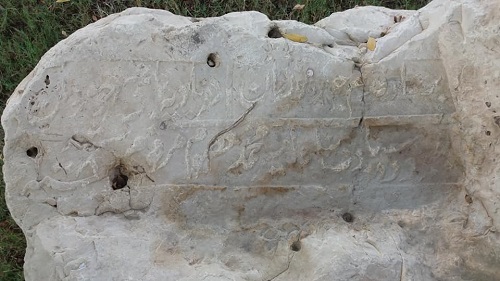
In 1740, Nader Shah made over Kachhi Gandava to the Brahuis in compensation for the death of Khan of Qalat Mir Abdullah Brahui, who was killed by the Kalhora rulers of Sindh in a battle. Since that time Gandava, Jhal Magsi and Fatehpur are part of Balochistan. In 1839, Sir John Keane marched from Gandava to Dadhar and Sibi. In 1901, Kachhi Gundava District had following population of tribes: Jats, Hindus, Magsi, Rind, Lashari, Dombki, Syeds, Kaheri, Buledi, Khosa and Umrani. The Syeds of Gandava are Bukhari Syeds and possess considerable influence in Sindh and Balochistan. They live at Gandava, Fatehpur and Kot Muhammad Shah. Syed Safar Shah, Syed Muhammad Shah and Syed Rakhial Shah were leading figures in the British era. Fatehpur is famous for the shrines of Syed Rakhial Shah and Syed Cheezal Shah, well-known poets of Sindhi language. Around 18 devotees were killed during a bomb blast at the entrance of this Sufi shrine in 2017.
Jauhar Aftabchy further writes:
The King however rode back with a few of his attendants to the sweet water pond, leaving all the heavy baggage and followers at the brackish water; but as it was the first watch of the night when we reached the good water, the first thing his Majesty did was to perform his ablutions, and say his prayers; after which he and all the servants quenched their thirst; then, having rested for some time, each person took with him as much water as he could carry, and returned to the camp.
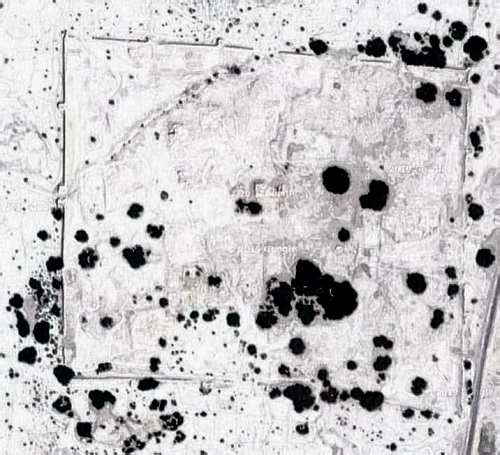
The people being much fatigued with their long march, we halted till 2 o’clock of the following day. When we had nearly reached the next stage, the camel which carried the purifying vessel being much tired, fell down, and could not move; on which the humble servant, Jauhar Aftabchy, represented the circumstances to his Majesty, who gave orders that the servants should unload the camel, and bring the vessels into the camp; but no one paid any attention to these orders, and the humble servant being left nearly alone with the camel, was attacked by robbers, who wounded him with an arrow, and struck his companion with an axe. On this I bawled out to some people who were nearer the camp, “that the robbers had attacked me, and carried away all the contents of the sacks (Suleetas).” The people repeated to those who were playing;” the King said, “I hear the cry of robbers, what kind of play do you call that?” On this the chief eunuch galloped his horse to where I was, and saw that thieves had carried away all the brazen vessels; he, therefore, took hold of the camel and led him into the camp.
The next day we again marched, and encamped in an open plain, the soil of which has two opposite effects; in the hot season the Semum blows with such violence, that the very limbs of a man are melted, and he dies; but in the winter the cold is so severe, that if a person takes his soup out of the pot, and pours it into a plate, it becomes instantly a piece of ice.In short, all our people who were without warm clothing, suffered very severely; but on this occasion his Majesty, who had a fur cloak, graciously ordered it to be unlined, the exterior part of which he gave to Byram Beg, who had suffered much from cold, and sent the lining to Mehter Anys. We again marched, and arrived at Salmustan or Mustung, which is one of the districts of Candahar.” Jauhar also mentions Mulk Khutty, a Baloch chief of Gurm Syr (warm climate), which forms the boundary between Candahar and Khorasan. He served the exiled king with great respect and hospitality.
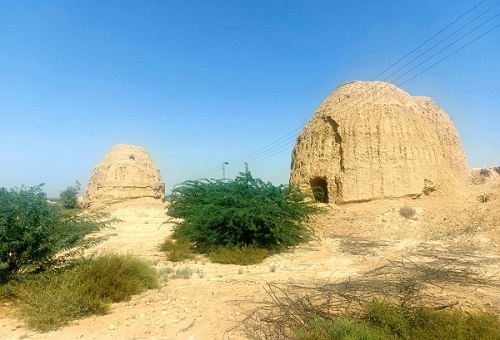
Mughal princess Gulbadan Begum also narrated this same story in her Persian book Humayun Nama, or the account of the life of her half-brother Emperor Humayun. She was the daughter of Emperor Babur: born in 1523 at Kabul, Afghanistan, and died in 1603 at Agra, India. She wrote this book on the request of her nephew Emperor Akbar in 1575 AD. She writes:
At length the Emperor went on board boats, with kinsfolk and family, army and the rest, and travelled for three days on the great river. At the frontier of Shah Husain Mirza’s territory is a village called Nuasi (Runai). Here they halted, and his Majesty sent Sultan Quli, the head camel driver, to fetch the camels. Sultan Quli brought a thousand, all of which his Majesty gave to his amirs, and soldiers, and others, ordering them to be apportioned.” (Page 163)
The camels were such that one might say that they had not known city, or load, or man for seven, or rather seventy, generations. As horses were few, many people took camels to ride on, and what were left were assigned for the baggage. Every camel which was mounted, at once flung its rider to the ground, and took its way to the jungle. (53a)
Every pack-camel, when it heard the sound of horses’ foot jumped and bounded and tossed off its load, and went off and way to the jungle. If a load was fixed so fast that, jump as it would, it could not get it off, it carried it away and ran with it into the jungle. This was the way the Emperor started for Qandahar. Some 200 camels must have gone off like this.
Shah Husain Mirza’s head-camel driver Mahmud was in Siwi (Sibi), and when the Emperor came near, he strengthened the citadel and retired into it. His Majesty came prosperously to within twelve miles’ distance. Then word was brought that Mir Allah-dost and Baba Jujuk had arrived in Siwi from Kabul two days earlier, and were going on to (visit) Shah Husain Mirza. By them Mirza Kamran had sent a dress of honour, and tipuchaq horses, and much fruit, and they were to ask for Mirza Shah Husain’s daughter.
Mir Allah-Dost sent 3,000 pomegranates and 100 quinces for his Majesty’s use, and wrote no letter, because he was afraid it might fall into the wrong hands. By word of mouth he sent to say: “If a letter should come from Mirza Askari or the amirs, it would not be bad to go to Kabul; but if not, it will be clear to your Majesty that nothing is to be gained by going. You have few followers. What, then, will happen?” Kasak came and reported this. The Emperor was stupefied and bewildered, and said: “What is to be done? Where am I to go?” They all consulted together. (54b) Tardi Muhammad Khan and Bairam Khan gave it as their opinion that it was impossible to decide to go anywhere but to the north and Shal-mastan, the frontier of Qandahar. “There are many Afghans in those parts,” they said, “whom we shall draw over to our side. Mirza Askari’s people too will join us.
Nowadays, Sibi is famous for Mir Chakar Khan Rind Fort, the Mehrgarh Archaeological Site, Victoria Hall and Sibi Mela.
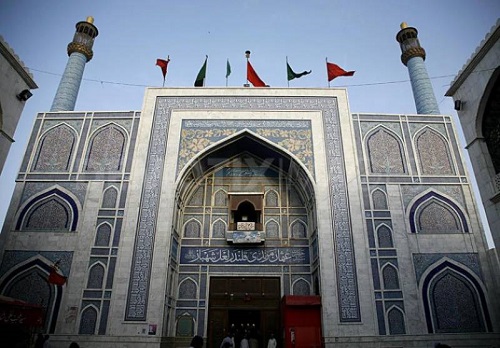
From the memoirs of Humayun compiled by Jauhar and Gulbadan Begum, we can easily know about ancient routes that led caravans from Sindh to Balochistan, Iran and Afghanistan. Emperor Humayun started his journey from Ranikot to Sehwan. After reaching Sehwan, he crossed Larkana and arrived at Fatehpur, a historic town of District Jhal Magsi Gundava in Balochistan. Again he took the Fatehpur Gundava route to Sibi and went to Iran via Mastung and Quetta.
These accounts provide us a vivid picture of the socio-political and cultural scenario of 16th-century Sindh and Balochistan.

